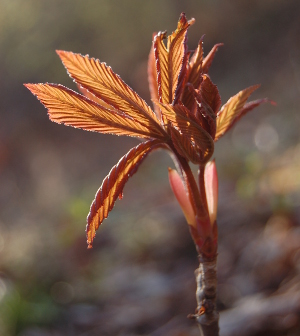 This is an actual conversation that took place one late winter day at the nursery where I worked:
This is an actual conversation that took place one late winter day at the nursery where I worked:
Caller: Yes, I was wondering if you could answer a question for me. I’m going to spray my plants, and the container says not to use it on arborvitaes, and I was wondering, “Why not arborvitaes?” What will it do to them?
Me: What are you spraying? Is it dormant oil?
Caller: It’s horticultural oil.
Me: So, you’re spraying for insects?
Caller: (Getting exasperated with me) I’m just, you know, I’m spraying my plants! My boxwoods and yews and stuff, and I was wondering why I shouldn’t use it on arborvitaes. I thought you guys would have had experience with this stuff. Maybe you could ask one of your experts–not that you’re not an expert. . .
Me: I guess I don’t understand why you’re spraying when there isn’t a problem.
Caller: (Getting really exasperated with me now and ignoring my response) I’m thinking they’ll get burnt by it, that arborvitaes can’t handle this spray and will get their foliage burnt.
Me: I guess that’s probably it.
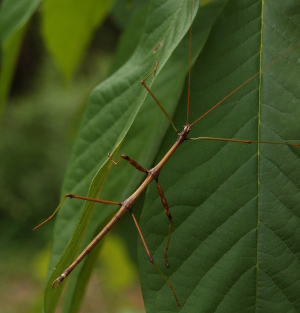 Overzealous spraying seems to me like taking too many antibiotics–sure, they kill the bug in your body, but they also kill the beneficial bacteria in your gut that help with digestion and to fight off disease. Plants, too, are living systems, interacting with beneficial organisms, above-ground and below-ground, that we can’t even see. They are part of a complex web of life that we don’t pay attention to. Out of sight, out of mind.
Overzealous spraying seems to me like taking too many antibiotics–sure, they kill the bug in your body, but they also kill the beneficial bacteria in your gut that help with digestion and to fight off disease. Plants, too, are living systems, interacting with beneficial organisms, above-ground and below-ground, that we can’t even see. They are part of a complex web of life that we don’t pay attention to. Out of sight, out of mind.
Shortly before having this conversation, I had read an odd little book called The Gardener’s Bed-Book: Short and Long Pieces to Be Read in Bed, written by Richardson Wright and originally published in 1929. In it, the author relates the story of a man who had bought a house with a big, old lilac on the property. Knowing Wright was a gardener, he asked him what he should do with it. I think Wright must have felt like I did when I received that phone call. Why do some people think there must always be something done to plants, some action taken?
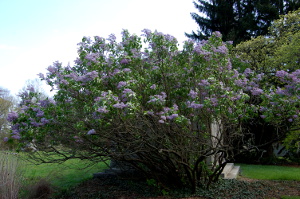 Sure, that lilac probably could have used some judicious pruning, but chances are it needed nothing else. Often we are better off doing nothing at all and leaving well enough alone. When I fractured my knee cap, my doctor advised against surgery. He told me they had a saying in med. school: “The opposite of good is better,” meaning that if something is functioning fairly well as is, doing something invasive to make it “better” might just make it worse. I healed, and didn’t have to undergo the risks of surgery.
Sure, that lilac probably could have used some judicious pruning, but chances are it needed nothing else. Often we are better off doing nothing at all and leaving well enough alone. When I fractured my knee cap, my doctor advised against surgery. He told me they had a saying in med. school: “The opposite of good is better,” meaning that if something is functioning fairly well as is, doing something invasive to make it “better” might just make it worse. I healed, and didn’t have to undergo the risks of surgery.
Apparently, this is a difficult lesson for some people to apply to the landscape. Shrubs must be shorn into meatballs, leaves meticulously whisked away (are people who put bags of leaves on the curb in fall the same ones who buy bags of compost in the spring?), plants sprayed before there is ever a problem.
The most ironic thing about that phone call was the plant in question, Thuja occidentalis, Eastern white cedar, or arborvitae–which literally means “tree of life.” This plant happens to hold the record for oldest living tree in Eastern North America, with specimens in Canada still hanging on after more than 1,600 years. I think it can do okay on its own.

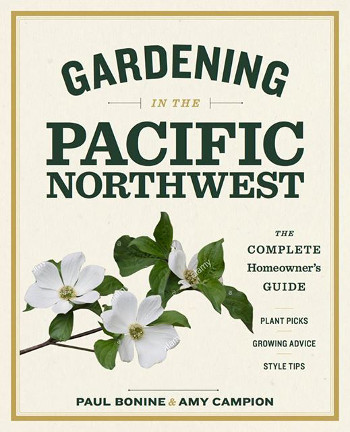























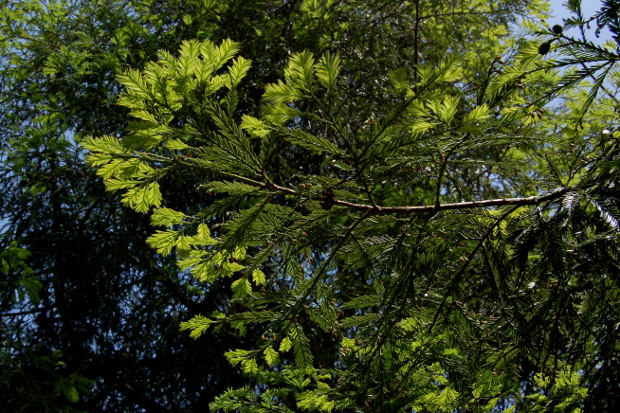


Please let me know what you think. I’d love to hear from you!